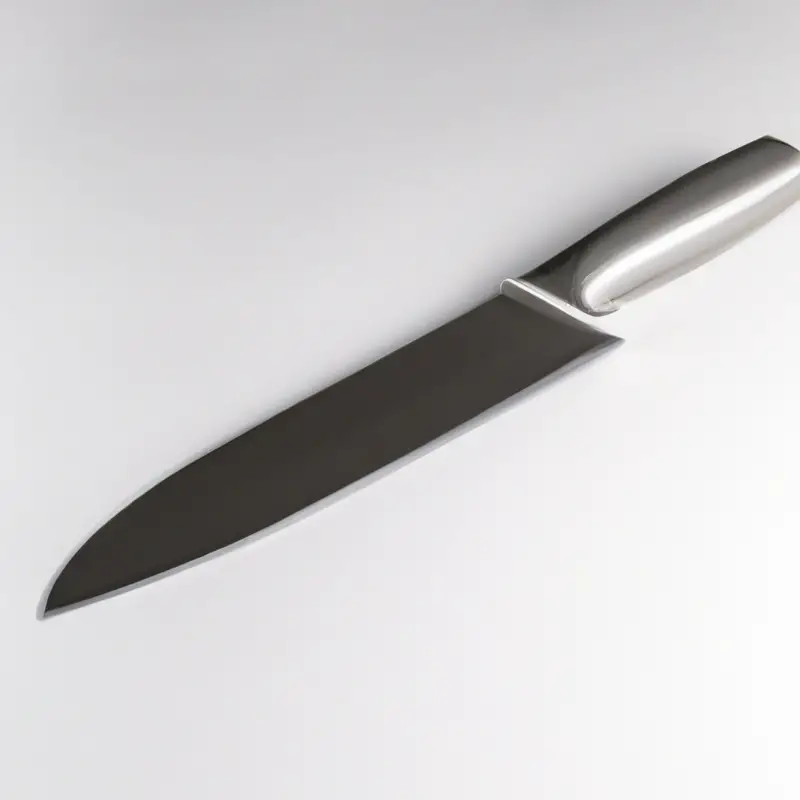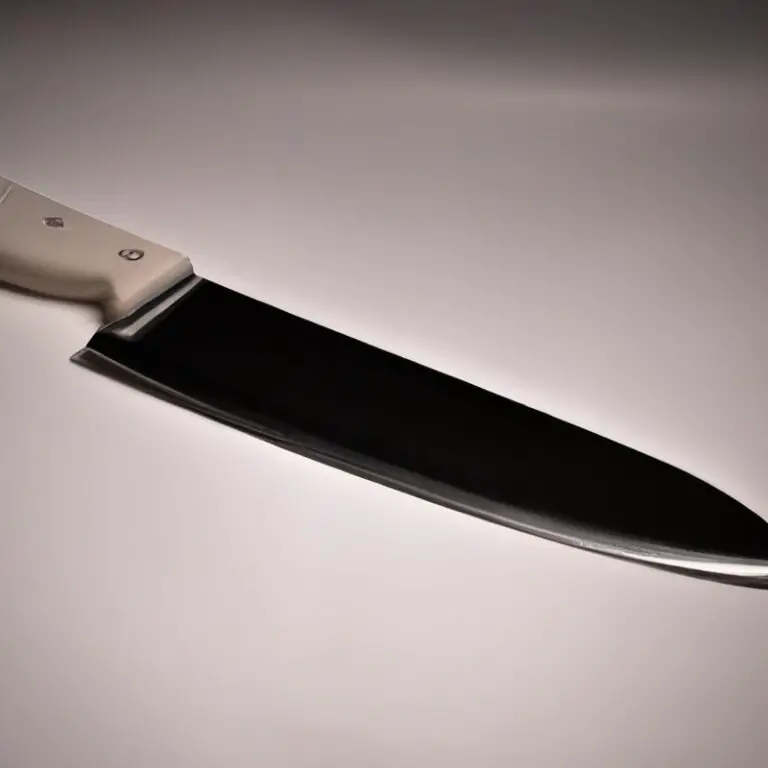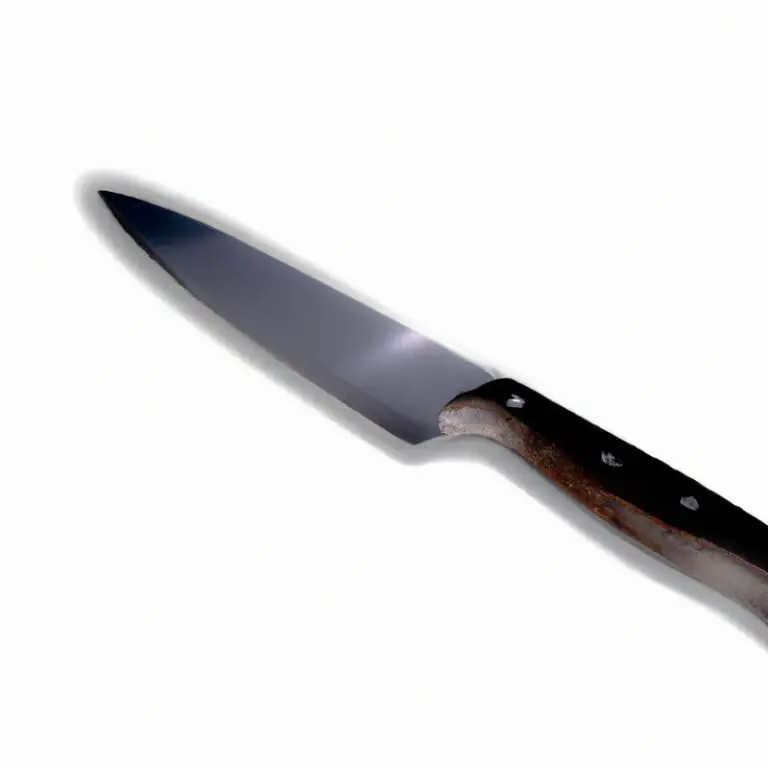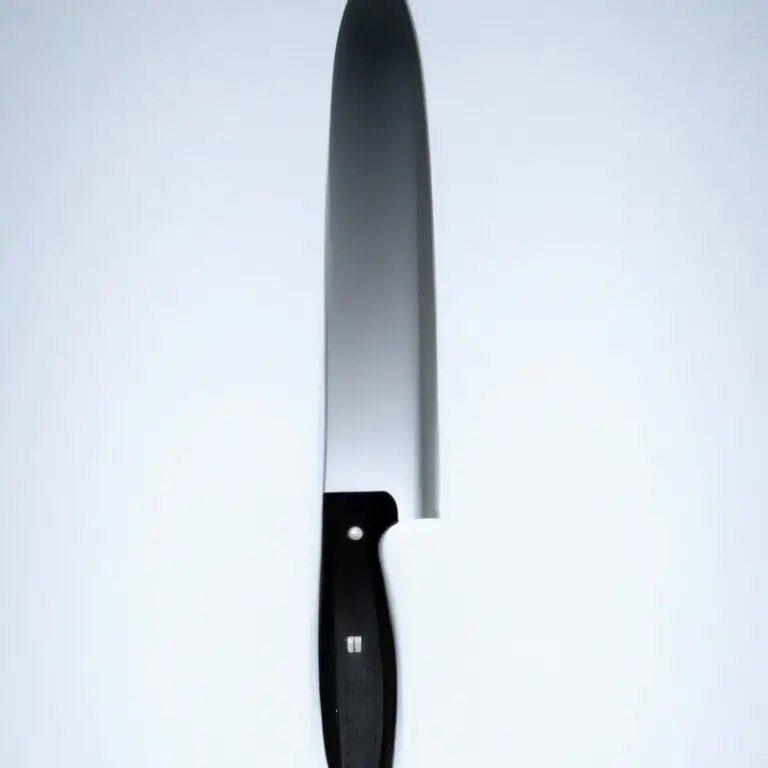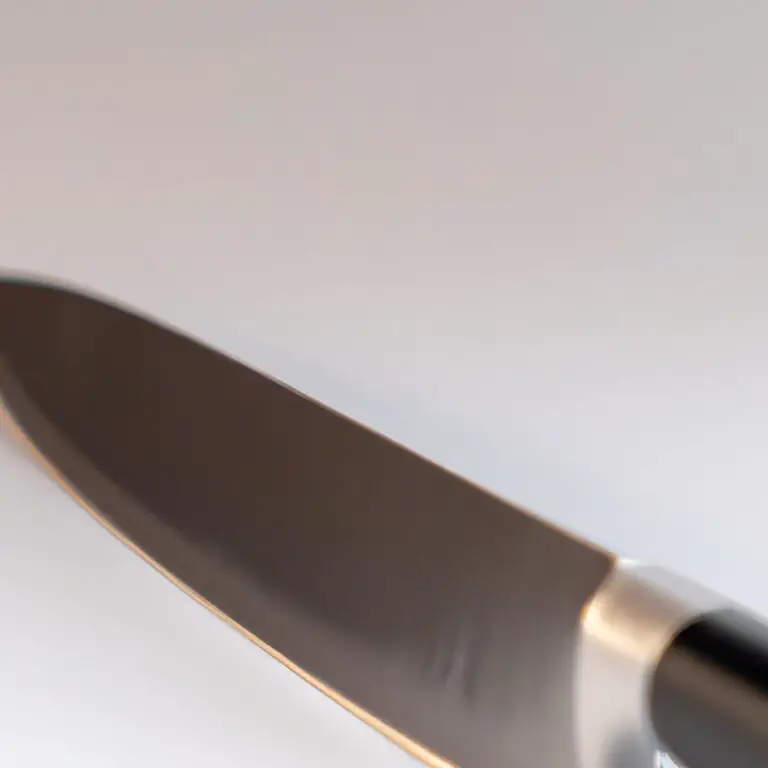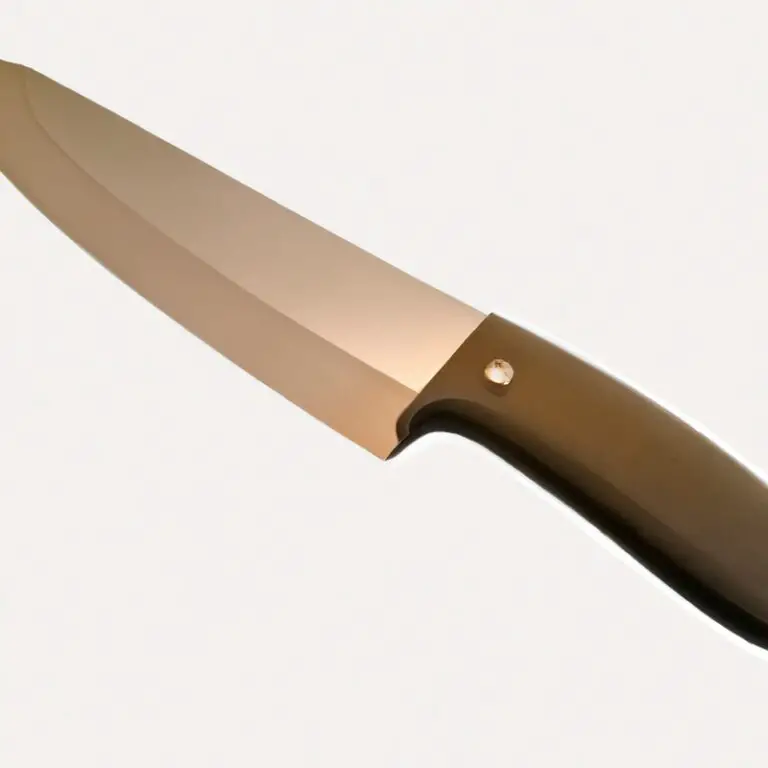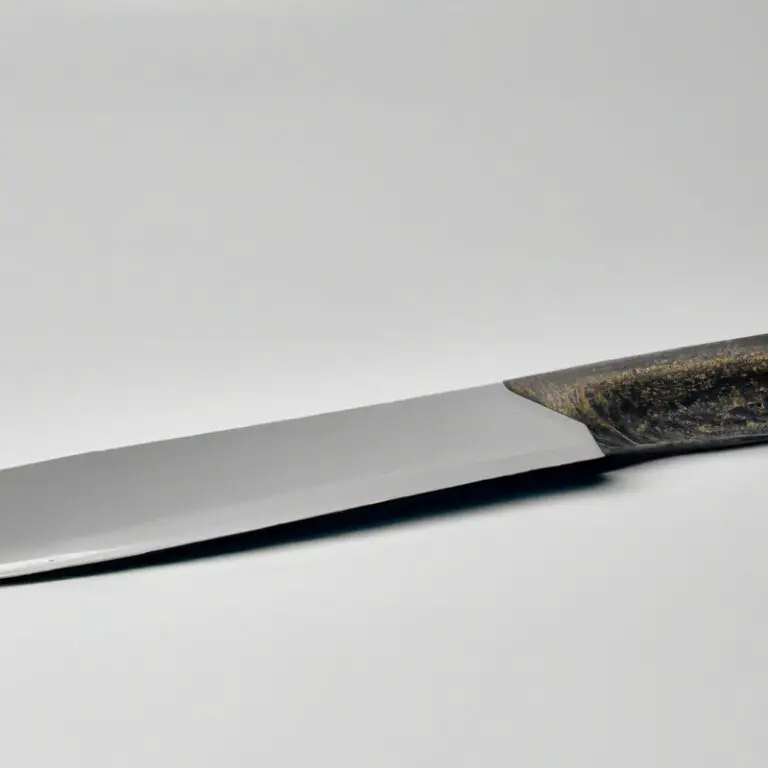What Is The Purpose Of a Bolster In a Chef Knife?
Key Takeaways:
- A bolster in a chef knife serves as a balance point that aids in control and precision during cutting and chopping.
- The bolster also adds weight and stability to the knife, providing a comfortable grip and reducing the risk of injury.
- A well-designed bolster can extend the lifespan of the knife, as it prevents the blade from becoming chipped or damaged from excessive force.
- When selecting a chef knife, it’s important to consider the quality of the bolster and how it fits in your hand, as it can greatly impact your overall experience with the tool.
Have you ever wondered why some chef knives have a thick metal band between the handle and the blade? That’s called a bolster and it serves a much greater purpose than just a design element.
Understanding the role of a bolster in a chef knife can drastically improve your cooking experience.
In this article, we’ll delve into the history, anatomy, and benefits of having a bolster on your chef knife. We’ll also explore how to use and maintain this essential feature, as well as discuss the ongoing debate of whether a chef knife with or without a bolster is the better option.
| Bolster in Chef Knife |
|---|
| Purpose |
| To provide balance, safety, and stability for the chef knife. |
| Description |
| A thick, heavy metal band located where the blade meets the handle of a chef knife. |
| Balance |
| The bolster shifts the center of gravity towards the handle, making it easier for the chef to handle the knife with precision and control. |
| Safety |
| The bolster acts as a finger guard that creates a physical barrier between the hand and the sharp blade, reducing the risk of accidental injuries. |
| Stability |
| The bolster provides additional weight for the knife, which reduces hand fatigue and helps with heavy chopping and slicing tasks. |
The role of a bolster in a chef knife: Everything you need to know
The bolster is a thick junction between the blade and handle of a chef knife that provides balance and helps protect the user’s fingers from slipping onto the sharp blade. It also adds weight and stability to the knife.
A chef knife with a bolster provides better control and precision while cutting, chopping, and slicing, making it ideal for professional chefs and amateur cooks alike.
The bolster can be made of various materials, such as plastic, stainless steel, or brass, and can come in different sizes and shapes. It is essential to choose a high-quality bolster that matches your needs and preferences for a better cooking experience.
Proper maintenance and care of the bolster will ensure the longevity of your knife and keep it in top working condition.
Ultimately, a chef knife with a bolster is a worthwhile investment for anyone who loves cooking and wants to achieve exceptional results.
The history of bolsters in chef knives
The bolster is a feature on chef knives that has been around for centuries. Historical records show that bolsters were initially introduced to help protect the user’s hand from slipping onto the blade during use.
Gradually, the bolster evolved to become an integral part of the knife’s structure, adding strength and balance to the blade.
Bolsters were traditionally constructed from brass, but modern-day designs incorporate stainless steel and other materials. Today, the bolster remains a defining feature of chef knives, synonymous with quality and precision.
Understanding the anatomy of a chef knife: The bolster
The bolster in a chef knife is the thick, metal section between the blade and handle. It provides balance, stability, and prevents your hand from slipping onto the sharp edge.
A high-quality bolster will improve the overall performance and precision of your knife, while a poorly designed one can negatively impact its longevity and safety.
There are two types of bolsters: full and half. A full bolster extends the full height of the blade, while a half bolster only goes partway.
Choosing the right bolster for your needs is crucial.
Proper maintenance and care for your bolster will ensure its longevity and performance. Understanding the anatomy of your chef knife’s bolster is essential, as it can greatly affect the overall quality of your knife.
The benefits of a chef knife with a bolster
A chef knife with a bolster offers several benefits. Firstly, it provides a sturdy transition between the blade and handle, ensuring a comfortable and secure grip.
The bolster also acts as a finger guard, preventing the user’s hand from slipping onto the blade, reducing the risk of injury.
Moreover, the weight and balance of a chef knife with a bolster make it easier to handle and control when chopping, slicing, or dicing. This, in turn, enhances the precision and accuracy of the cuts, making cooking more hassle-free and enjoyable.
In addition, the bolster adds durability to the knife, making it less prone to damage, such as chipping or breaking.
It also helps maintain the sharpness of the blade, as the bolster prevents the metal from rubbing against surfaces when cutting through hard materials like bones. Overall, a chef knife with a bolster offers excellent performance, safety, and durability, making it an essential tool for both home cooks and professional chefs alike.
The different types of bolsters found on chef knives
Chef knives come with different types of bolsters, each serving its unique purpose. The most common types of bolsters found on chef knives are full bolsters, half bolsters, and no bolsters.
Full Bolsters: A full bolster runs the entire length of the knife blade and provides a perfect balance and grip.
Full bolsters are also called integral bolsters since the metal of the blade and bolster is forged together. A full bolster offers protection to the fingers, prevents slipping, and helps maintain balance.
Half Bolsters: A half bolster runs halfway down the blade to provide the same level of protection and balance as a full bolster.
The absence of the bolster on the lower part of the blade makes it easier to sharpen. Half bolsters are less heavy and bulky than full bolsters, which makes it easier for chefs to maneuver.
No Bolsters: A chef knife without a bolster comes with a smooth transition from the blade to the handle.
No bolsters provide more clearance for the fingers while cutting, but there’s less protection and balance. Choosing the right type of bolster for your chef knife depends on personal preference, grip style, and intended use.
However, full and half bolsters offer more protection, balance, and grip than no bolsters.
How to properly use the bolster on your chef knife
Proper usage of your chef knife’s bolster can enhance your cutting experience and extend the life of your knife. To use the bolster correctly, grip the handle with your dominant hand while placing your thumb and index finger on either side of the bolster.
This grip provides stability and prevents your fingers from sliding towards the sharp blade.
Use a rocking motion while chopping, slicing, or dicing to maintain the proper grip. Avoid applying too much pressure or using a back-and-forth motion as this can damage the edge of the blade.
With correct usage and maintenance, your chef knife with a bolster will provide years of reliable use in your kitchen.
Why a chef knife without a bolster may not be the best choice
A chef knife without a bolster may not be the best choice because the lack of this essential feature can impact the weight, balance, and overall performance of the knife. A bolster also protects the user’s hand from slipping onto the blade.
A chef knife without a bolster requires additional caution and skill while in use.
Additionally, without a bolster, the blade is more susceptible to bending or breaking over time. Therefore, investing in a chef knife with a bolster can enhance both the safety and durability of the knife.
The impact of the bolster on the balance and weight of a chef knife
The bolster on a chef knife has a significant impact on its balance and weight. Bolsters that are thicker and heavier provide a better balance, making the knife easier to handle while cutting, chopping, or slicing.
A well-balanced knife reduces the risk of hand or wrist strain and improves cutting precision.
However, a heavier bolster does mean that the overall weight of the knife will be increased, which may not be suitable for some users. On the other hand, chef knives with thin or no bolsters offer a lighter weight without sacrificing the knife’s overall balance.
These knives are easier to maneuver and are ideal for precision cutting.
However, they may not be as durable or long-lasting as knives with thicker bolsters. Ultimately, the impact of the bolster on the balance and weight of a chef knife depends on the user’s preference and needs.
It is essential to choose a knife that feels comfortable and well-balanced in your hand, allowing for precise cuts and reducing the risk of injury or strain.
How to maintain and care for the bolster on your chef knife
To properly maintain and care for the bolster on your chef knife, it is important to clean it regularly. Use warm water and a mild dish soap to remove any food debris or stains.
Dry the bolster completely with a clean cloth after rinsing.
Avoid soaking your chef knife in water and never put it in the dishwasher. This can cause the blade and handle to separate over time, and the heat and water can damage the bolster.
Instead, hand wash your knife and immediately dry it afterwards.
If you notice any rust forming on the bolster, remove it with a mixture of baking soda and water using a soft-bristled brush. Rinse and dry the bolster thoroughly afterward.
Another important step in maintaining the bolster on your chef knife is to sharpen the knife regularly.
A dull blade can cause unnecessary pressure on the bolster, leading to damage over time. Use a honing rod or sharpening stone to keep your knife sharp.
Lastly, store your chef knife properly.
Avoid storing it in a cluttered drawer with other utensils that could scratch the blade or bolster. Instead, consider using a knife block or magnetic strip to safely store your knife.
By following these tips, you can keep the bolster on your chef knife in good condition for years to come.
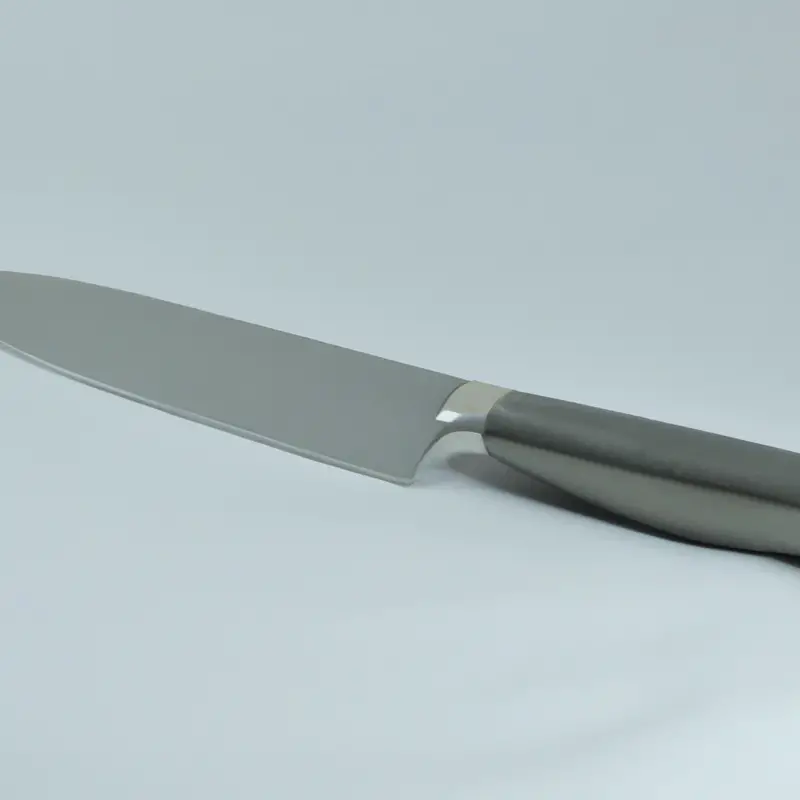
Comparing chef knives with and without bolsters: Which is better?
Chef knives with and without bolsters both have their advantages and disadvantages. Chef knives with bolsters tend to feel more balanced and provide a sturdy grip to prevent hand fatigue.
However, bolsters can make sharpening the blade more difficult, and they can also add weight and make the knife heavier.
On the other hand, chef knives without bolsters tend to be lighter and easier to maneuver. They also allow for easier sharpening as there is no bulky bolster obstructing the blade.
However, knives without bolsters may not provide as much hand support and can cause discomfort during extended use.
Ultimately, whether a chef knife with or without a bolster is better depends on personal preferences and the specific tasks the knife will be used for. Both types of knives have their unique advantages and disadvantages, and it is important to consider these factors before making a purchase.
Choosing the right chef knife bolster for your needs
When choosing the right chef knife bolster for your needs, it is important to consider the material, size, and shape. Bolsters can be made from a variety of materials, including stainless steel, brass, and titanium.
It is important to choose a material that is durable and easy to maintain.
Additionally, the size and shape of the bolster can have an impact on the balance and weight of the knife. A full bolster can provide more heft and balance to the knife, while a half bolster allows for easier sharpening and maneuverability.
It is important to choose a size and shape that feels comfortable and natural in your hand.
Finally, consider the brand and quality of the knife when choosing a bolster. A high-quality chef knife with a well-made bolster can provide precision and performance for years to come.
Take the time to research and invest in a chef knife with a bolster that meets your needs and fits your budget.
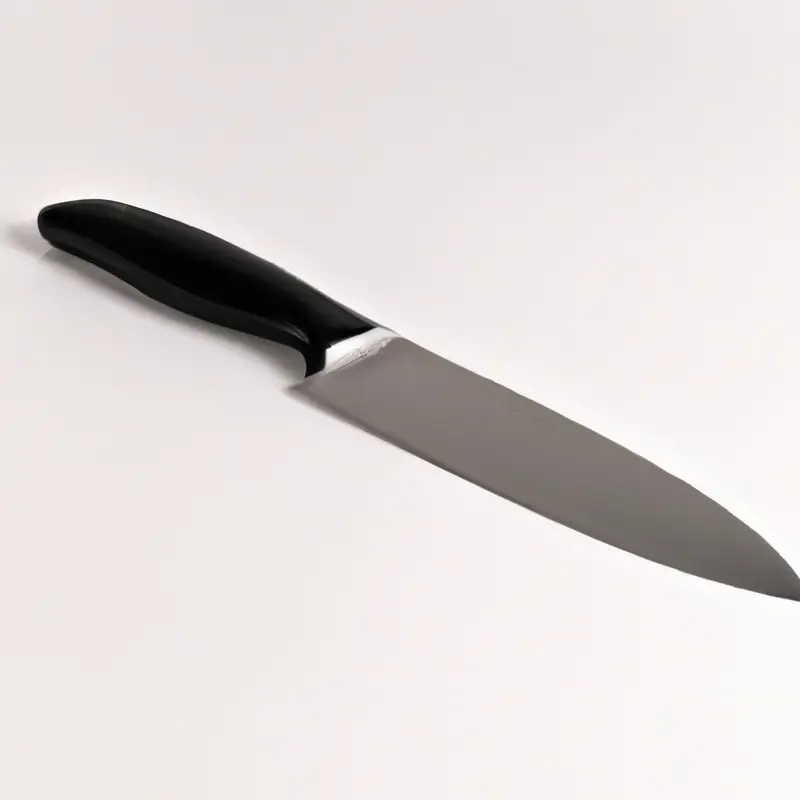
The importance of selecting a high-quality bolster in a chef knife
Selecting a high-quality bolster in a chef knife is crucial for both performance and safety in the kitchen. The bolster acts as a barrier between the blade and handle, providing stability, balance, and control.
A poorly designed bolster can cause discomfort and fatigue during prolonged use, leading to less precise cuts and even injury.
A high-quality bolster should be made of durable materials such as steel or brass, seamlessly integrated into the overall design of the knife, and provide a comfortable grip. Investing in a chef knife with a well-crafted bolster will enhance your culinary experience and ensure long-term use.
How the bolster can impact the performance and precision of a chef knife
The bolster is an essential component in a chef knife that significantly impacts its performance and precision. It adds weight in the handle, giving a balanced distribution of weight in the knife and offering better control over the blade.
The weight in the handle improves the knife’s cutting ability and enhances the user’s comfort while using it.
The bolster also provides a barrier between the handle and the blade, reducing the risk of hand injuries. However, the presence of the bolster may affect the degree to which you can sharpen the blade’s tip and its proximity to the cutting board.
A well-designed bolster ensures the chef knife’s durability, improves its performance, precision, and safety while using it.
A detailed guide on how to sharpen a chef knife with a bolster
To sharpen a chef knife with a bolster, follow these steps:
- Place a wet towel on your work surface to prevent slipping.
- Hold the knife at a 20-degree angle against a honing steel.
- Starting from the base of the blade, move the knife down and across the honing steel, keeping the angle consistent.
- Repeat this process on the other side of the blade.
- If the knife is still dull, use a sharpening stone to sharpen the blade.
- Hold the knife at a 20-degree angle against the sharpening stone, starting at the base of the blade.
- Pull the knife down and across the stone, maintaining the angle.
- Repeat on the other side of the blade until the knife is sharp.
- Use a honing steel between uses to maintain the sharpness of the blade.
Remember, it’s important to sharpen your chef knife regularly to ensure its longevity and performance. When sharpening a knife with a bolster, take care to sharpen the entire blade, including the area behind the bolster.
By following these steps, you can ensure your chef knife stays sharp and ready for any culinary task.
Exploring the debate: Should you buy a chef knife with or without a bolster?
When it comes to the debate of whether to buy a chef knife with or without a bolster, it ultimately comes down to personal preference and usage. A bolster provides added weight and balance to a knife, making it easier to handle and control.
However, some chefs prefer a knife without a bolster for a lighter and more agile blade.
It’s important to consider your specific needs and preferences when deciding which type of knife to purchase. Regardless of your choice, make sure to invest in a high-quality chef knife that meets your needs and is comfortable to use.
The impact of the bolster on safety while using a chef knife
The bolster on a chef knife provides added safety while using the knife. It acts as a barrier between the blade and the handle, preventing your fingers from slipping onto the sharp edge while cutting.
The bolster also adds weight to the knife, which increases stability and control while cutting.
This helps to reduce the risk of the knife slipping out of your hand during use and causing injury. Therefore, a chef knife without a bolster may not be the safest option.
When selecting a chef knife, it’s essential to choose one with a sturdy bolster to ensure safe and efficient use.
Expert tips on how to identify a high-quality bolster in a chef knife
Expert Tips on How to Identify a High-Quality Bolster in a Chef Knife
- Look for a smooth transition between the bolster and the blade. A high-quality bolster should seamlessly blend into the blade without any gaps or crevices.
- Examine the thickness of the bolster. A thick and sturdy bolster can provide extra support and balance to the blade.
- Check the material of the bolster. A high-quality bolster is usually made of the same high-carbon stainless steel as the blade for durability and hygiene purposes.
- Look for a bolster that extends all the way to the end of the blade. A full bolster provides better protection for your fingers while chopping.
- Ensure that the bolster has a comfortable grip. A well-designed bolster should fit comfortably in your hand without causing any discomfort or fatigue.
- Check the weight and balance of the knife. A high-quality bolster can significantly impact the balance and weight distribution of the knife, providing more precision and control during use.
- Don’t forget about brand reputation. Choose a reputable brand for your chef knife, and read reviews to ensure that their bolsters are of high quality.
The difference between a full bolster and a half bolster
The main difference between a full bolster and a half bolster in a chef knife is the amount of metal used for the bolster. Full bolsters extend all the way to the edge of the blade, while half bolsters only cover a portion of the blade.
Full bolsters typically add more heft and weight to the knife, while half bolsters tend to provide a lighter and more agile feel.
Full bolsters can also be more difficult to sharpen, while half bolsters allow for easier sharpening. Ultimately, the choice between a full bolster and a half bolster comes down to personal preference and the requirements of the task at hand.
How a chef knife’s bolster can affect the longevity of the blade
The bolster of a chef knife plays a crucial role in its longevity. It acts as a barrier between the handle and the blade, providing stability, balance, and support to the knife.
A well-made bolster can prevent the handle from cracking or breaking, and the blade from becoming damaged.
However, a poorly designed bolster can create stress points that can cause the blade to chip, crack, or even break over time. Therefore, it is important to choose a chef knife with a high-quality bolster that is crafted from durable materials.
Additionally, proper maintenance and care of the bolster can help extend the lifespan of the blade.
Regular cleaning and occasional lubrication with food-grade oil can help prevent corrosion, rust, and other damage. Overall, the bolster of a chef knife can greatly impact the longevity and performance of the blade, making it an essential component to consider when purchasing a new knife.
Final Verdict
In conclusion, the bolster in a chef knife is an essential component that directly affects the precision, performance, and safety of the blade. Through this article, we’ve learned about the history, anatomy, and benefits of a chef knife with a bolster, as well as the different types and how to properly maintain them.
Encountering the debate of whether one should buy a chef knife with or without a bolster, we’ve provided a comprehensive guide to help you make a sound decision.
Selecting the right high-quality bolster for your chef knife is crucial for its longevity and optimal performance. Additionally, knowing how to sharpen a chef knife with a bolster and understanding the difference between a full bolster and a half bolster are crucial in achieving culinary excellence.
As a reputable source of culinary information, we’ve strived to provide you with reliable and actionable insights on the purpose of a bolster in a chef knife.
We hope this article has been insightful and useful, and that you’re now better equipped to make informed decisions when it comes to selecting and maintaining your chef knife with a bolster.

